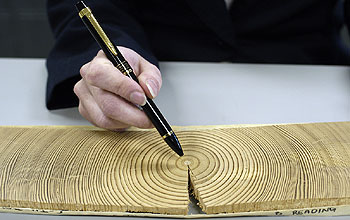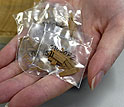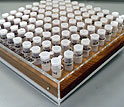|

Press Release 05-099
Trace Gold Reveals Tree's Past

June 14, 2005
Using a new method to detect trace elements in tree rings, researchers at Cornell University and Penn State noticed elevated amounts of gold in specific rings and correlated several of the bands to a number of volcanic eruptions over the past 500 years.
Penn State nuclear engineer Kenan Unlu, Cornell tree-ring expert Peter Kuniholm and their colleagues believe they can use the technique not only to confirm known eruptions and other phenomena, but also to detect those events when other climatic and geologic records are missing.
Full details are available in a Penn State press release: http://live.psu.edu/story/12203
-NSF-
NSF Award: SBR-9905389 The Prehistory of the Eastern Mediterranean: Dendochronological, Radiocarbon and Dendrochemical Approaches

Media Contacts
Joshua A. Chamot, NSF (703) 292-8070 jchamot@nsf.gov
A'ndrea Elyse Messer, Pennsylvania State University (814) 865-9481 aem1@psu.edu
Program Contacts
John E. Yellen, NSF (703) 292-8759 jyellen@nsf.gov
Principal Investigators
Peter Ian Kuniholm, Cornell University (607) 255-8650 pik3@cornell.edu
Co-Investigators
Kenan Unlu, Pennsylvania State University (814) 865-6351 k-unlu@psu.edu

The National Science Foundation (NSF) is an independent federal agency that
supports fundamental research and education across all fields of science and
engineering, with an annual budget of $6.06 billion. NSF funds reach all 50
states through grants to over 1,900 universities and institutions. Each year,
NSF receives about 45,000 competitive requests for funding, and makes over
11,500 new funding awards. NSF also awards over $400 million in
professional and service contracts yearly.
 Get News Updates by Email Get News Updates by Email
Useful NSF Web Sites:
NSF Home Page: http://www.nsf.gov
NSF News: http://www.nsf.gov/news/
For the News Media: http://www.nsf.gov/news/newsroom.jsp
Science and Engineering Statistics: http://www.nsf.gov/statistics/
Awards Searches: http://www.nsf.gov/awardsearch/
| 




